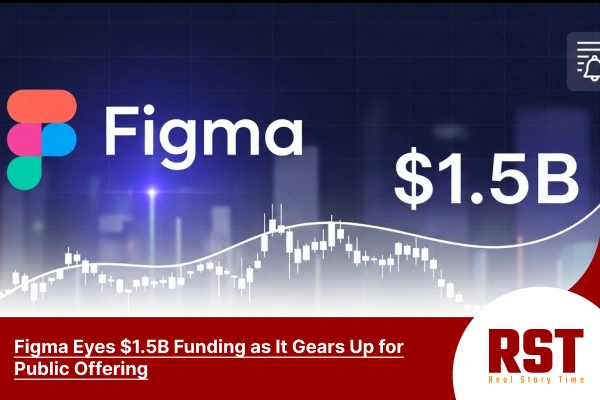Figma Eyes $1.5B Funding as It Gears Up for Public Offering
By Anjana Chaudhary - Jul 12, 2025 | Updated: July 12, 2025 | 4 min read

The Figma public offering moves forward as the design leader submits its S-1, with strong financials positioning it to raise $1.5 billion in what could be 2025’s most notable tech debut. The offering is expected to be compared to CoreWeave’s successful listing as one of the year’s substantial technology IPOs if it is successful.
The petition claims that Figma demonstrated strong revenue growth, bringing in $749 million in 2024, a 48% increase from the previous year, and a 91% gross margin. The company was resilient before its IPO, as its profitability increased by the close of 2024 despite losing $732 million in 2023 due to employee stock distributions.
Figma is not without problems, though, including increasingly stiff competition from AI-powered design software like “Lovable.” Even as it prepares to impress Wall Street with its healthy finances, the company acknowledges in its filing that it will be imperative to remain at the forefront of the ever-evolving AI industry.
Making of a Future IPO Giant: Figma Eyes $1.5B in Public Funding
The Figma public offering now advances, with analysts forecasting one of 2025’s landmark tech listings as the company files its registration. Renaissance Capital predicts the company can raise as much as $1.5 billion, which would match CoreWeave’s record-setting listing this year.
The company had difficulties turning a profit; in 2023, it suffered a significant $732 million loss due to employee stock compensation expenses. Nevertheless, Figma rebounded and achieved a 91% gross margin in Q4 2024. Such figures suggest that Wall Street might greet Figma’s going public with much enthusiasm.
With Figma gearing up for its IPO, everyone is curious to see how the company will transition into a world where it must compete against all the AI-based design tools that have recently emerged. Figma is developing AI capability in-house but acknowledges the stakes of potentially falling behind in an increasingly competitive landscape.
The IPO will test whether or not investors believe that Figma has what it takes to stay ahead in the face of disruptive new competitors.
Figma’s $732 Million comeback From Profit to Loss and Back
The design platform’s experience demonstrates how high-growth technology firms recover quickly via strategic investments. The 2023 $732 million loss may have seemed like an enormous loss for the company; however, in reality, it was a strategic decision made by Figma to attract new talent with generous stock grants.
What is fascinating about Figma’s story is the speed of the rebound. In just four quarters of the year, the company returned to profitability and continued to be the industry leader in terms of margins. That it managed to do so within quarters speaks volumes about the intrinsic resilience of Figma’s subscription model in the face of a competitive landscape for design software.
Figma’s incredible turnaround is a demonstration of the financial engineering that can occur before an IPO, with Figma being able to eliminate many one-time costs in anticipation of a public listing. The way that Figma has approached that process may point the way for other technology companies contemplating an initial public offering in the next 12 months.
READ MORE: 7 Types of Rest You Didn’t Know You Needed – Backed by Science
Centralized Leadership: Field’s Vision Guides Public Transition
Figma’s IPO filing reveals that CEO Dylan Field holds unusual dominance over the company, with 75% voting power through his ownership and proxy over co-founder Evan Wallace. Founder dominance is uncommon in a business like Figma.
The corporate structure gives Field de facto IPO decision-making power with few limitations. That is, he has the authority to decide most things, from board makeup to strategy.
Wallace’s 2021 departure and voting transfer have enabled this emphasis.
This setup provides the company with risk and opportunity to ensure product vision continuity as well as test investors’ appetite for concentrated power.
Conclusion: A Defining Moment for Figma’s Future
A significant turning point in the company’s development from a disruptor to a well-known organization, the Figma public offering highlights its capacity to grow while maintaining innovation. The next goal of Figma is to develop its company while maintaining its position as the industry leader in design products.
The Figma public offering presents a challenge in maintaining its entrepreneurial spirit, as it is directed by and aligned with the interests of Wall Street. While healthy margins and devoted users are welcome, public markets will be a new obstacle for Figma and its entrepreneurial culture.
The IPO will provide a case study on the viability of a product-led company in an era of AI, as well as whether existing venture-backed SaaS companies can continue to flourish without being disrupted by new technologies. The public offering of Figma will serve as a test of whether a traditional SaaS can defend against new technology disruptions.
Notice an error?
Help us improve by submitting a correction.







